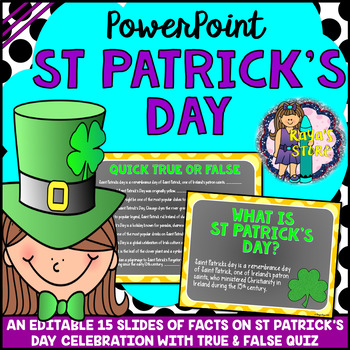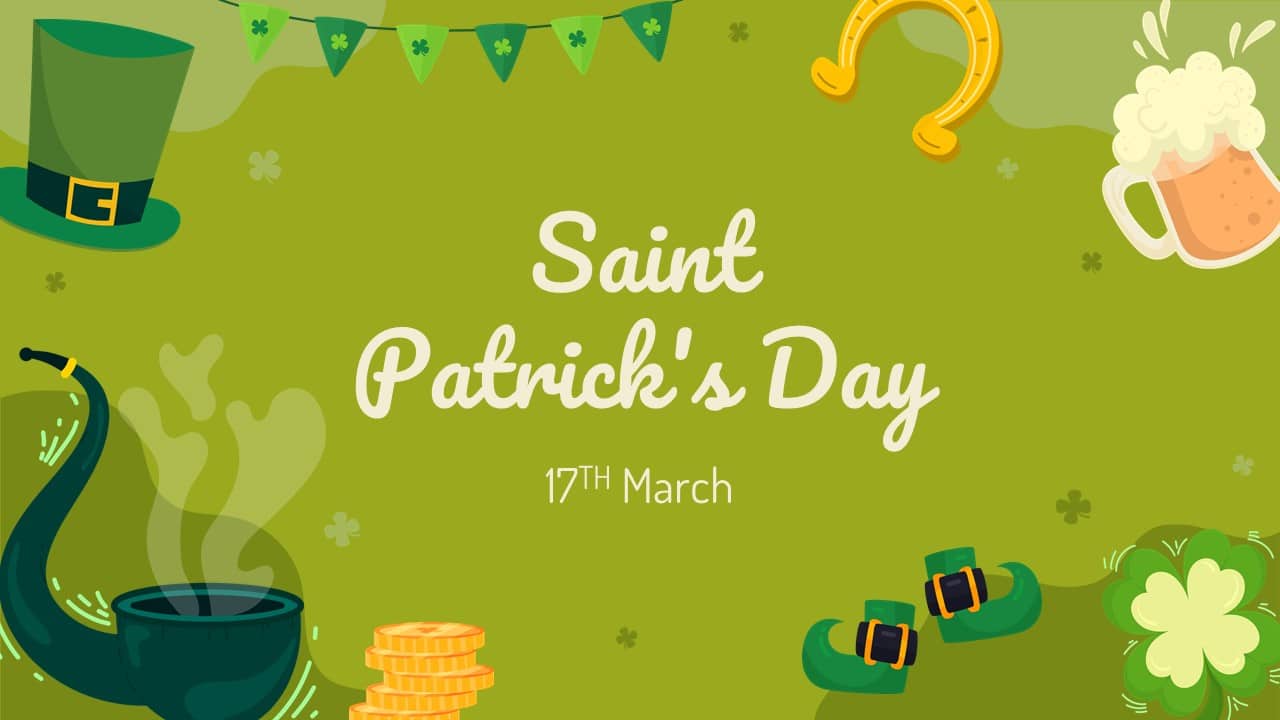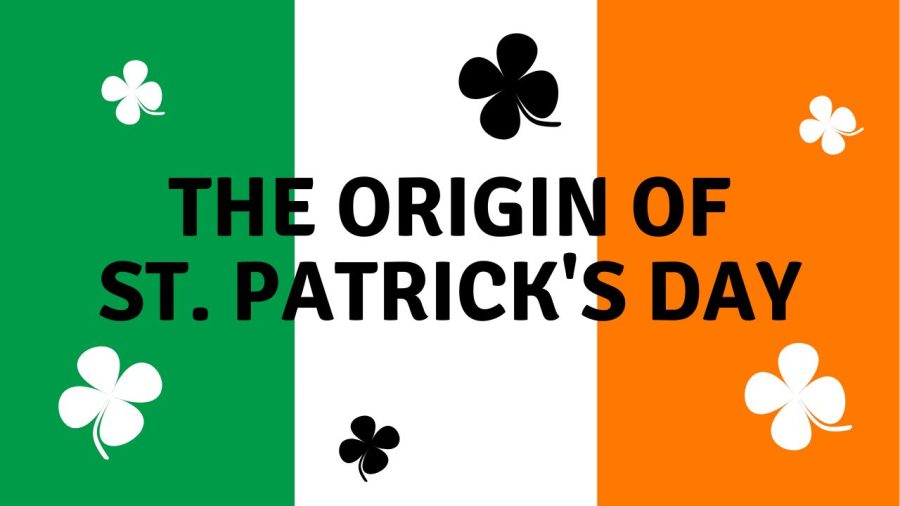Gallery
Photos from events, contest for the best costume, videos from master classes.
 |  |
 |  |
 |  |
 |  |
 |  |
 |  |
PowerPoint presentat. 1743 uses. Paugaliza. SAINT PATRICK'S DAY . This presentation co. 1562 uses. makitaariadne. St Patrick's Day. PPT with St Pat's Da. 966 uses Free Canva presentation template. Introducing our captivating History of Saint Patrick presentation template! Designed with a cute illustrative style, this template is perfect for everyone interested in learning about the fascinating story of Saint Patrick. Every year in March the Irish celebrate the traditional St. Patrick's Day. This celebration has a lot of history behind it, such as, for example, that the celebration takes place on March 17, the day on which the well-known St. Patrick died. This multipurpose template that we propose here will allow you to talk about the history of St. Patrick This PowerPoint presentation dives deep into the inspiring history of St. Patrick, the rich culture of Irish culture, and values that resonate universally, like perseverance, kindness, and community. Designed to engage students with meaningfuconnections, this resource transforms a festive holiday into an opportunity for reflection and growth. In modern-day Ireland, St. Patrick's Day has traditionally been a religious occasion. In fact, up until the 1970s, Irish laws mandated that pubs be closed on March 17. Beginning in 1995, however, the Irish government began a national campaign to use St. Patrick's Day as an opportunity to drive tourism and showcase Ireland to the rest of the world. The document provides information about St. Patrick's Day, including its history and traditions. It explains that St. Patrick's Day originated as a Christian feast day honoring St. Patrick, the patron saint of Ireland, and has since evolved into a secular celebration of Irish culture. This bright and bold PowerPoint tells the story of the life of St. Patrick, from birth to death. The PowerPoint talks about St. Patrick’s story and his path to introducing Christianity across Ireland. Detailing his early captivity, spiritual awakening, religious studies and eventual return to Ireland, the PowerPoint is a great resource to introduce your class to the celebration of St This 13-slide presentation deck, featuring a green color theme, provides a structured and visually engaging overview of Saint Patrick’s Day celebrations, traditions, and history. The slides cover the origins of the holiday, global celebrations, cultural significance, and modern-day festivities. Happy St. Patrick's Day! Hello, hello! I'm the leprechaun who lives in the Slidesgo offices and as St. Patrick's Day is approaching, I've decided to get in control and bring you a little gift that I'm hiding inside my distinctive green hat. It's a multipurpose template for talking and wishing a happy St. Patrick's The History of St. Patrick's Day. The History of St. Patrick's Day. Who was St. Patrick?. St. Patrick, the patron saint of Ireland, is one of Christianity's most widely known figures. But for all his celebrity, his life remains somewhat of a mystery. 282 views • 14 slides Patrick's Day lesson includes a full lesson plan, different worksheet choices, and a PowerPoint presentation to teach the history of St. Patrick's Day with. See preview for a closer look!Note: This resource will download in as 1 PDF. The document provides information about St. Patrick's Day, including its history and traditions. It explains that St. Patrick's Day originated as a Christian feast day honoring St. Patrick, the patron saint of Ireland, and has since evolved into a secular celebration of Irish culture. Learn facts about St Patrick and the feast day of the patron saint of Ireland with our interesting PowerPoint.Once you've downloaded this resource, you'll have access to our wonderful PowerPoint detailing who St Patrick was, what he did to become the patron Saint of Ireland, and why we celebrate Saint Patrick.Complete with easy-to-read text and beautiful illustrations, this is a wonderful History of the Holiday. St. Patrick's Day is celebrated on March 17, his religious feast day and the anniversary of his death in the fifth century. The Irish have observed this day as a religious holiday for thousands of years. On St. Patrick's Day, which falls during the Christian season of Lent, Irish families would Celebrate St. Patrick's Day by teaching your students about the history, legends, and symbols of St. Patrick's Day. This product is any easy, low-prep (or even no-prep) resource to teach your students all about St. Patrick's Day.This resource is ideal in a whole group setting where the teacher is wa History of the St.Patrick's Day Patrick was the son of Calpurnius, a Roman-British army officer. He was growing up as other kids in Britain. One day a band of pirates landed in south Wales and kidnapped this boy with many others. Then they sold him into slavery in Ireland. He was imprisoned there for 6 years. He dreamed of having seen God. Finally, he did escape and went to Britain and then to This St. Patrick’s Day lesson will introduce students to the history and traditions of the holiday through a PowerPoint with interactive activities. The lesson includes a worksheet on Slide 1, which should be printed in A3 size for students to complete. History of the St.Patrick's Day St. Patrick's Day is the national holiday of Ireland and it is usually celebrated on March 17. Irish immigrants began observing the holiday in Boston in 1737 and the first St. Patrick's Day parade was held in New York City in 1766. Title: History of the St.Patrick's Day 1 (No Transcript) 2 History of the St.Patrick's Day Patrick was the son of Calpurnius, a Roman-British army officer. He was growing up as other kids in Britain. One day a band of pirates landed in south Wales and kidnapped this boy with many others. Then they sold him into slavery in Ireland. Powerpoint describing the history of St. Patrick's Day/St. Patty's Day in Ireland. Slides tell the story of Patrick and how he converted the Irish to Christianity.
Articles and news, personal stories, interviews with experts.
Photos from events, contest for the best costume, videos from master classes.
 |  |
 |  |
 |  |
 |  |
 |  |
 |  |